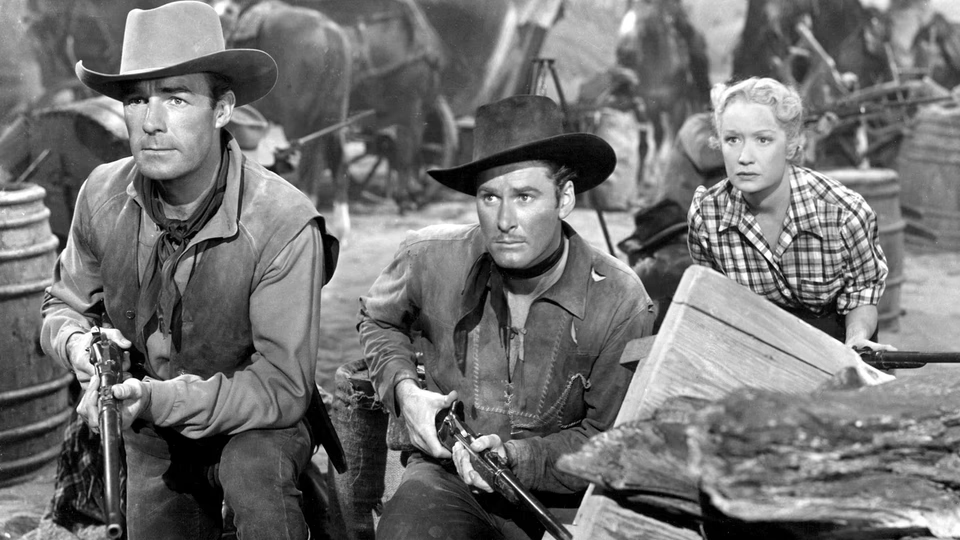Virginia City

In the waning days of the Civil War, Union spy Errol Flynn travels to Virginia City, Nevada to prevent Confederate agent Randolph Scott from smuggling out millions of dollars’ worth of gold.
The film opens with Flynn in Confederate Libby Prison. As night falls, the Union prisoners move a wood stove to reveal a tunnel. Several climb down. After a year of hard digging, freedom is in sight. In what will be a recurring theme, the production values shine. We see Flynn worm through the narrow, damp, muddy tunnel and chip away at the earth.
Enter Scott, the prison commander. He enters the Union cell, ordering the guard to lock the door behind him. Scott moves without a sound among the dozens of snoring bodies. Then he spies mud on a sleeping man’s boots. Scott looks down and sees muddy footprints leading from the stove. He rouses some men and orders them to move the stove, revealing the tunnel. Scott climbs down and orders Flynn and the men out.
Scott reveals he’s known about the tunnel since they began digging. Flynn’s jaw drops. “And you let us dig this whole time,” he says with venom. But such is Scott’s charisma and delivery that we understand his perspective. If the prisoners are digging a tunnel he knows about, then they’re not escaping via other means. Flynn and company escape nonetheless, but this exchange proves crucial to setting up the film’s best scene.
Later, in Virginia City, Scott threads his way through the bustling smoke-filled saloon. He passes Flynn’s sidekicks, both former prisoners, but can’t place where he knows them. As he approaches the bar, he shrugs it off and orders a drink. As he raises his glass, he spots Flynn in the mirror, mirroring his pose. Both men freeze, staring at each other. Director Michael Curtiz holds the wide shot for a beat as realization dawns on both men. Rather than break into fisticuffs or gunplay, the men size each other up, exchanging barbs that mask a grudging professional respect. This surfaces later, when Scott offers to free prisoner Flynn’s hands for a long ride if Flynn promises not to escape and Flynn declines, saying, “I don’t want to make a promise I might not be able to keep.”
Indeed, Flynn and Scott have better chemistry with each other than with their obstinate love interest, Miriam Hopkins. She convinces early, dressed as a Southern Belle as she travels back to Virginia City via stage. But she’s seven years older than Flynn and the age gap seems to grow as the film unwinds thanks to poor costume and makeup choices. She plays better opposite Scott, who’s almost five years her senior, but the script turns on Flynn’s falling for her, which doesn’t convince.
Then there’s Humphrey Bogart. Sporting a moustache and Mexican accent, he’s playing real-life outlaw John Murrell. Never mind Murrell was born in Virginia and raised in Tennessee, not Mexico. Even worse, Bogart’s accent grows more pronounced as the film goes on, starting mild—and even vanishing—during his early scenes, but reaching full parody by the film’s end.
Compounding the casting missteps, the film tacks on a preposterous epilogue that sees Hopkins visit the president. We see Lincoln in shadow as he delivers a preachy ‘the south is coming home’ speech complete with solemn music on the soundtrack that’s part of the film’s desperate bid to avoid alienating Southern audiences. This may be the reason for Bogart’s ridiculous accent. Making the villain Mexican means he’s neither a Northerner nor a Southerner. But then, why cast Bogart?